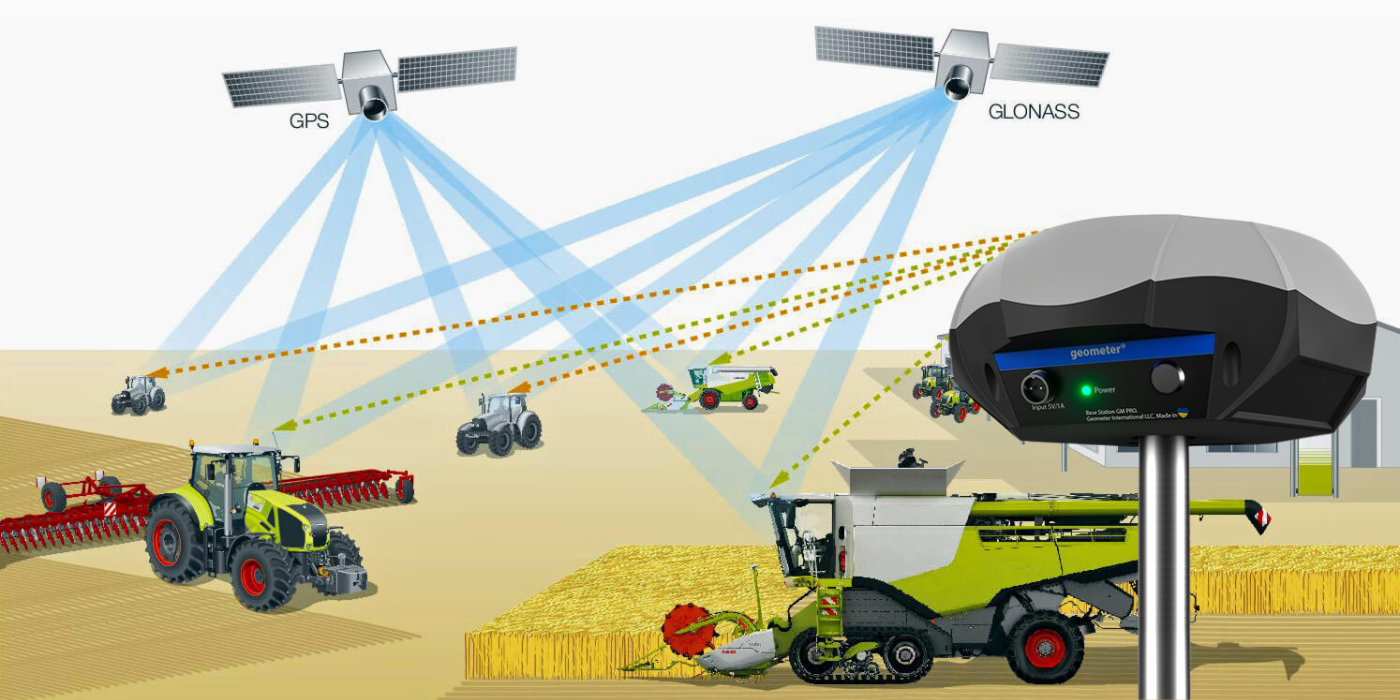Improving the reliability of "RTK FIX" for farms in conditions of unstable network signal
01.11.2022
The fleet of agricultural machinery, which is equipped with an automatic steering system (autopilot), consists of thousands of units. Every day, such equipment goes to work in the field and one of the conditions for the successful application of the autopilot on a tractor or combine is the availability of a stable fixed pilot solution for its operation.
How it works?
Auto steer system for tractors or other self-propelled agricultural machinery work on the principle of driving the equipment according to the trajectory determined by the operator, which is included in the automatic driving program. The steering column is controlled automatically without the participation of the operator using an electric or hydraulic drive. An important factor in the work of autopilots for agricultural machinery is driving accuracy. It is achieved by using GNSS/RTK receivers, which, thanks to corrections from the base station, allow the autopilot to drive the equipment with a deviation of no more than 2-3 cm from the course set in the application.
Corrections from GNSS base stations are usually a paid service provided by providers of such networks. There are several large providers in Ukraine that have coverage in almost every region. As in the case of conventional mobile communication, if the base station does not work for some reason, users have no connection, or it is unstable, so in the case of network GNSS base stations - its acceptors will not receive adjustments. Accordingly, agricultural machinery with autopilot will not be able to work effectively.
Why should we not rely only on the CORS network corrections?
The situation in which the networks of GNSS base stations operate is quite complicated. Power outages, security requirements, and other factors cause corresponding difficulties for customers who use this service.
Work in the field is based on current weather conditions and the loss of each day significantly affects the harvest and, accordingly, the profit of the farm. When equipment worth tens or even hundreds of thousands of dollars, due to the lack of a stable "RTK FIX", cannot be used at 100% of its capabilities, it can also be attributed to a liability.
How to improve the reliability of the RTK signal and have a reliable FIX?
In order to answer this question, you need to understand how the base RTK station functions and what conditions are required for its operation.
The base station is essentially a GNSS receiver, which is installed in a known point, and has the ability to communicate with satellite systems and transmit corrections via GSM or radio channel with an RTK device (autopilot, RTK receiver, etc.).
Accordingly, ensuring the operation of the base RTK station requires the availability of the Internet (when communicating via the GSM module) or a short distance from the station to the field (when working via the radio channel), which is not always possible to achieve. At the same time, the requirements for the Internet can be minimal and even "weak" 2G for some stations will be enough.
The second factor that is needed for operation is to provide a reliable power source for the base station. Good models of base stations have built-in batteries, so they will continue to work even after the main power supply is turned off, but this time does not exceed a few hours, so it is advisable to have a backup power source, such as a generator or a solar battery.
Accordingly, in order to get your own RTK corrections, you need to have 3 things:
- own base station
- connection to the Internet
- power supply source
That is, each farm with a fleet of vehicles that have auto steering systems or other RTK devices, having installed a base station and ensuring its uninterrupted operation, will have its own reliable source of RTK corrections and will not depend on external factors that arise when using CORS network corrections.
The option with its own RTK base station can be used as the main and backup when CORS network corrections do not provide a stable fixed solution.
Economic feasibility of installing your own base RTK station
The economic reasonability of this solution for medium and large farms is obvious. Paying an average of about $90 for corrections for one device per month, if there are 3 or more units of equipment with auto steering system in the farm, the base station will pay off quickly enough.
For smaller farms - an ideal solution for joint use with neighbors. The RTK base Station from Geometer operates within a range of 50 km or more, so it can cover a large area. The joint use of free adjustments will not only improve reliability but also scale without additional costs in the future.
Multi-frequency GNSS RTK base station L1, L2, L5.
Multi-frequency GNSS RTK base station L1, L2, L5.




